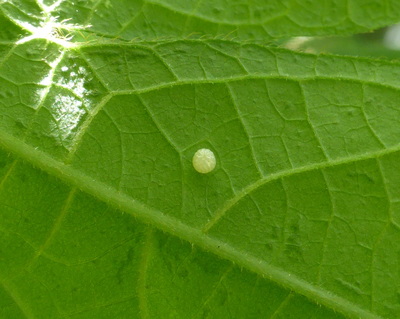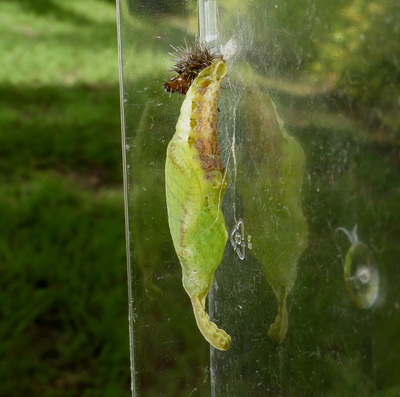Nymphalidae : Biblidinae
Hamadryas februa (Hübner)
Gray Cracker
Hamadryas februa (Hübner)
Gray Cracker
Previously known as: Until recently it was thought that the species found on Cuba was Hamadryas amphichloe Pale Cracker. Here you can read the paper, following DNA barcoding analysis, showing that the lineage of the Caribbean species comes from H. februa not H. amphichloe as previously thought.
Description and Similar Species: Wingspan 70-88mm. Sexes similar but males have a paler apical half of the upper forewing and females have rather more pink markings on both sides. The only confusion species is Variable Cracker Hamadryas feronia but this is only a rare vagrant to Cuba. It is somewhat smaller than H. februa and has a blueish tinge to the upperside and a red S near the costa of the forewing on both sides. The Cracker butterflies, of which there are 20 species worldwide, get their name from their habit of making a cracking sound in flight as a warning but the loudness varies between the species. On a trip to Costa Rica in 2016 a Guatemalan Cracker H. guatemalena flew down from its typical face-down perch on a mangrove trunk and chased off another that was flying close past us. There were several loud cracking sounds as it did so - so loud in fact that it made us jump! In Cuba the sound made by Gray Cracker is quieter but audible.
Range: Mexico to Brazil and many of the Caribbean islands.
Status: In Cuba it first colonised the east of the island in about 1930 (Hernández) and is now widespread throughout and can be common in woodland and sometimes more open areas. They habitually settle on trunks of trees facing downwards though they do occasionally settle on branches or leaves.
Nectar Plants: Mainly feed on fruit but have been seen on Tournefortia, Hibiscus and Lantana.
Larval Foodplants: Dalechampia scandens (Euphorbiaceae).
Description and Similar Species: Wingspan 70-88mm. Sexes similar but males have a paler apical half of the upper forewing and females have rather more pink markings on both sides. The only confusion species is Variable Cracker Hamadryas feronia but this is only a rare vagrant to Cuba. It is somewhat smaller than H. februa and has a blueish tinge to the upperside and a red S near the costa of the forewing on both sides. The Cracker butterflies, of which there are 20 species worldwide, get their name from their habit of making a cracking sound in flight as a warning but the loudness varies between the species. On a trip to Costa Rica in 2016 a Guatemalan Cracker H. guatemalena flew down from its typical face-down perch on a mangrove trunk and chased off another that was flying close past us. There were several loud cracking sounds as it did so - so loud in fact that it made us jump! In Cuba the sound made by Gray Cracker is quieter but audible.
Range: Mexico to Brazil and many of the Caribbean islands.
Status: In Cuba it first colonised the east of the island in about 1930 (Hernández) and is now widespread throughout and can be common in woodland and sometimes more open areas. They habitually settle on trunks of trees facing downwards though they do occasionally settle on branches or leaves.
Nectar Plants: Mainly feed on fruit but have been seen on Tournefortia, Hibiscus and Lantana.
Larval Foodplants: Dalechampia scandens (Euphorbiaceae).
Egg
Larva
Pupa
Foodplant and Habitat























